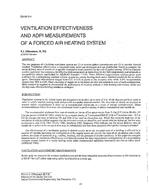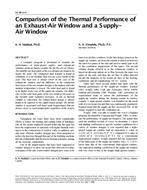To achieve a net-zero energy building and neighborhood development, a variety of alternate energy generation systems can be used to maximize the independence from the local energy grid. These alternative energy generation systems mqy include solar PV, solar thermal waste-to-energy combined heat and po1ver (WtE -C HP), and natural gas. The generation from these resources can be in terms of thermal and electrical energy. The generation period of each source can be intermittent or readily available. For instance, solar-based technologies are dependent upon the seasonal weather conditions dun·ng the dqy throughout the year, ivhereas, resources like W tE -C HP and natural gas can be considered as readily available resources. In addition to this, the heating and cooling demands are driven by type of building such as commercial or residential. Therefore, depending upon the demand of a building, type of generation output (heat or electricity) and availability of energy (affected by 1veather yearly variation), significant advantages can be achieved by coupling the heating and cooling systems with diverse energy sources.
In this work, va·n ous energy generation resources are considered for a mixed-use muftistorey building (1\1SB) with residential and commercial uses. Lower floors are used as various commercial uses (i.e., retails, offices and supermarket), whereas, upper floors are used for residential purpose. The case stur!J building is designed assuming high performance building envelope. The PV and solar thermal panels are installed on the roof of the building. The community scale W tE -C HP is considered to supply heat and electricity, employing local 1vaste disposal. Based upon the hourly heating and cooling demand profiles and availability of energy from various sources, the cooling and heating potentials of various technologies are estimated in this 1vork. The results indicate that optimal solutions include PV, W tE -C HP and gn”d electricity operated air source heat pump. Around 45% of heating and cooling load can be directly seroed by PV electricity during availability, 1vhereas, during fess heating and cooling demand periods, up to 50882 kWh (1.74 X 108 BW) of excess electricity is available.
Citation: 2020 Virtual Conference Papers
Product Details
- Published:
- 2020
- Number of Pages:
- 8
- Units of Measure:
- Dual
- File Size:
- 1 file , 11 MB
- Product Code(s):
- D-VC-20-C004


